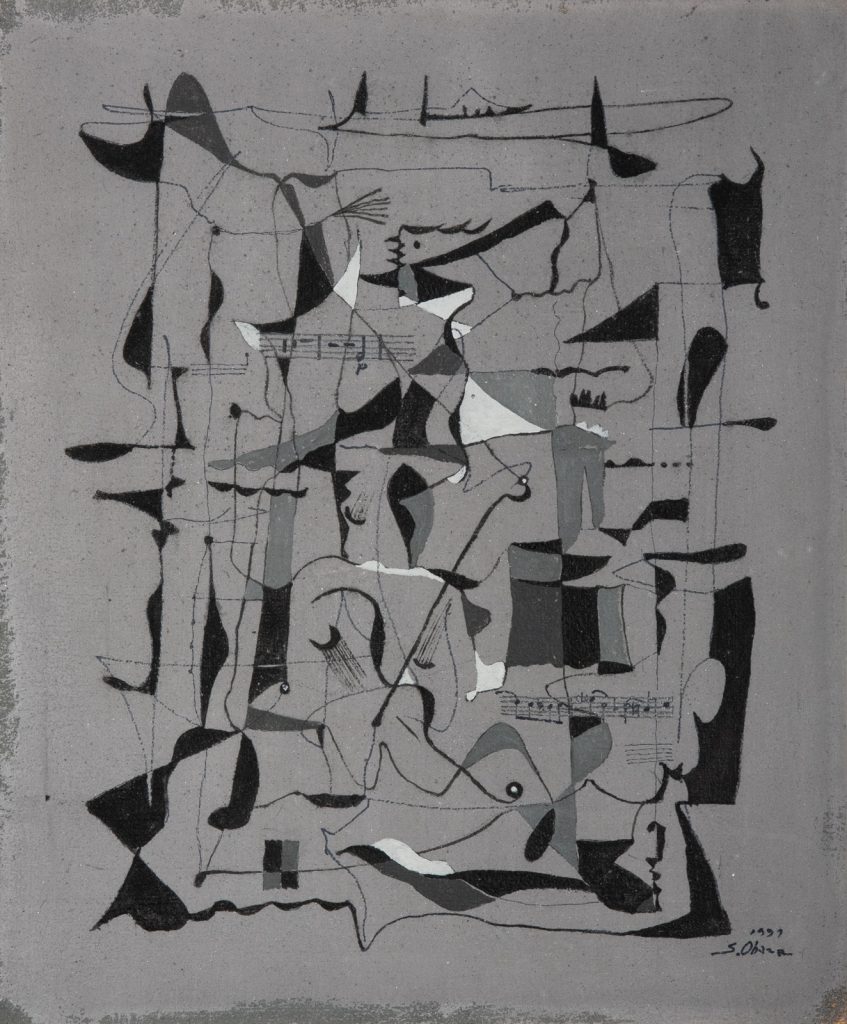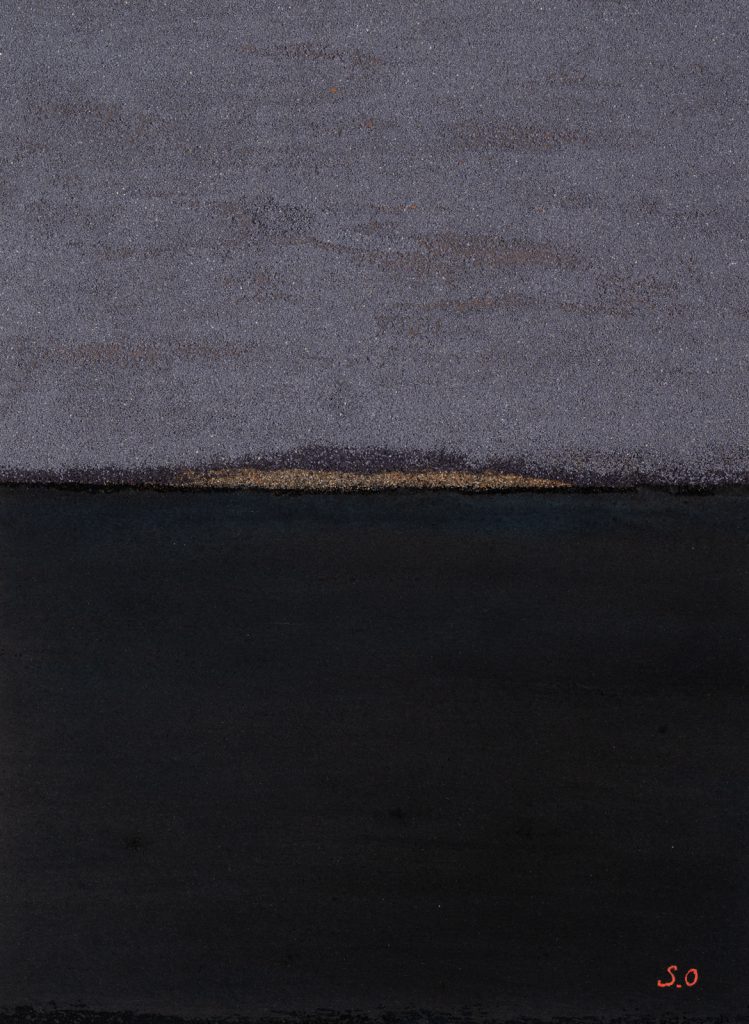「海より シベリウス交響詩OP73 」
1999 50.5×30.5 尾花成春
#尾花成春 #九州派 #ギャラリー #うきは市 #obanashigeharu #kyusyuha #abstractart #abstract #artwork #contemporaryart #musicartwork #artgallery #sibelius
「海より シベリウス交響詩OP73 」
1999 50.5×30.5 尾花成春
#尾花成春 #九州派 #ギャラリー #うきは市 #obanashigeharu #kyusyuha #abstractart #abstract #artwork #contemporaryart #musicartwork #artgallery #sibelius
「山上にて聞きしこと2」Liszt 交響詩第一番 1997 720×1020 尾花成春
#尾花成春 #九州派 #ギャラリー #うきは市 #obanashigeharu #kyusyuha #abstractart #abstract #artwork #contemporaryart #musicartwork #artgallery #liszt
「ベルリオーズ 幻想交響曲」1998
Berlioz:Symphonies fantastique
光画堂は4/9まで休業いたします。
#尾花成春 #九州派 #ギャラリー #うきは市 #obanashigeharu #kyusyuha #abstractart #abstract #artwork #contemporaryart #musicartwork #gallery #berlioz #syphonie
「存在の意」尾花成春 1994
“Meaning of being”
吉井のIさんが逝去された。尾花成春の古くからの友人であり、そしてまた良き理解者でもあった。会うたびに延々と絵や哲学の話をされていたようだ。
光画堂を始めたことをとても喜んでくれ、焦らずゆっくりやりなさいと助言をくれた。(先行きが明るくないことを見越してあったのだろう)
訃報を聞いた時、ちょうど撮影していた絵の裏に尾花成春が書き残していた言葉を見つけた。単なる偶然かもしれないがちょっと恐ろしくもなった。
「昔、神を信じていた時代、事物の一つ一つを克明に描くことはその対象ではなく神の摂理を一体として描いた。」
I氏の手紙より。
吉井の知の巨人が天に還った。
合掌。
Mr.I living in Yoshii-town has passed away. A longtime friend of OBANA Shigeharu, and also a good sympathizer. Each time they met, they talked endlessly about painting and philosophy.
When I opened the Gallery Kougado, he was very pleased and advised me to proceed slowly and little by little without rushing. (He would have foreseen that there was no immediate success.)
When I heard the obituary, I was surprised to find the words that OBANA Shigeharu wrote down behind the picture I was shooting at that time.
It may be just a coincidence, but that coincidence has become a little frightening.
“In the days of believing in God in the past, drawing each and every thing carefully was not the subject, but one of God’s providence.”
From Mr. I’s letter.
The intellectual giant of Yoshii has returned to heaven.
#尾花成春 #九州派 #ギャラリー #うきは市 #obanashigeharu #kyusyuha #abstractart #abstract#obanashigeharu #kyusyuha #artwork #contemporaryart

SIBELIUS En Saga と欅の大樹
1997 41×62
#尾花成春 #九州派 #ギャラリー #うきは市 #obanashigeharu #kyusyuha #abstractart #abstract #artwork #contemporaryart #musicartwork #gallery #sibelius
SHOSTAKOVICH Piano Trio No. 2
1997 45×52
#尾花成春 #九州派 #ギャラリー #うきは市 #obanashigeharu #kyusyuha #abstractart #abstract #artwork #contemporaryart #musicartwork #gallery #shostakovich #pianotrio
「山上にて聞きしこと」Liszt 交響詩第一番 1997 72×102
#尾花成春 #九州派 #ギャラリー #うきは市 #obanashigeharu #kyusyuha #abstractart #abstract#obanashigeharu #kyusyuha #artwork #contemporaryart #musicartwork #artgallery

尾花成春は90年代後半から、クラシック音楽をテーマにした絵を描き始めている。当時、九州交響楽団のメンバーが絵を習いに来ており、彼女たちの影響があったのだろう。絵画と室内楽のコラボレーションも度々催していたようだ。
Obana SHIGEHARU started painting on the theme of classical music from the late 1990s.
At that time, some members of the Kyushu Symphony Orchestra came to learn painting, which probably had their influence. They often collaborated with paintings and chamber music.
#尾花成春 #九州派 #ギャラリー #うきは市 #obanashigeharu #kyusyuha #abstractart #abstract#obanashigeharu #kyusyuha #artwork #尾花成春 #九州派 #ギャラリー #うきは市 #obanashigeharu #kyusyuha #abstractart #abstract#obanashigeharu #kyusyuha #artwork #contemporaryart#contemporaryart #musicartwork

#尾花成春 #九州派 #ギャラリー #うきは市 #obanashigeharu #kyusyuha #abstractart #abstract#obanashigeharu #kyusyuha #abstractart #abstract